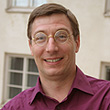Redundancy in scientific writing
You may remember an elementary or middle school English teacher urging you to vary the vocabulary in your writing. I have a very strong memory of that from my youth.
Such strict lessons from an early age may be difficult to break, but scientific writing does not have to be like prose writing for English class. Redundancy in your vocabulary is perfectly acceptable, and, often the case, desirable!
Wilkinson (1991, p. 67) refers to one form of repetition to maintain coherence in the text as the “hook-and-eye linkage” because the eye is drawn to the hooks (repeated words and phrases), allowing the reader to follow your train of thought.
Here is an example with the hooks in boldface.
Another factor affecting the density of new snow is crystal size. Large dendritic crystals will occupy much empty air space, whereas smaller crystals will pack together into a denser assemblage. The ultimate size of crystals depends on factors that affect the growth rate, such as the residence time in the cloud and the degree of supersaturation with respect to ice. For a given degree of supersaturation with respect to ice, crystal growth by vapor diffusion is dependent primarily on temperature, as well as secondary pressure effects.
Had the word particle been used interchangeably for crystal, the reader would have been slightly more challenged following the flow of the paragraph.


